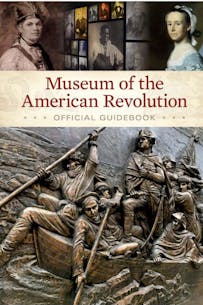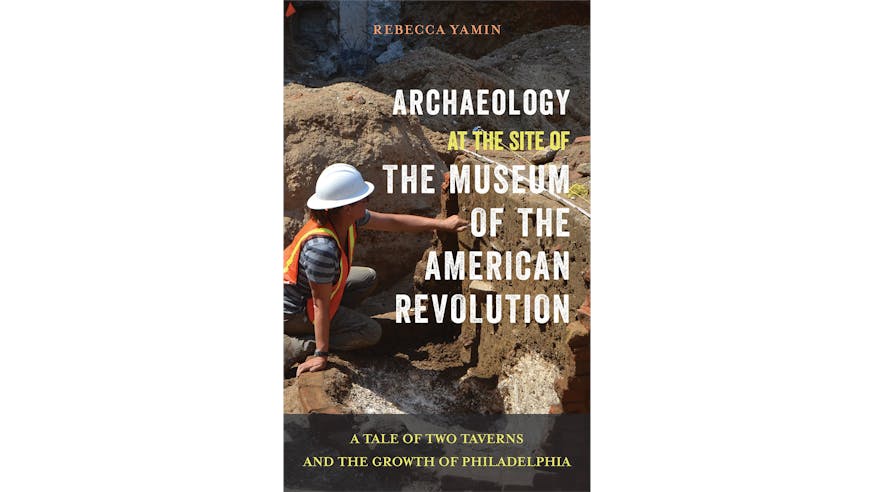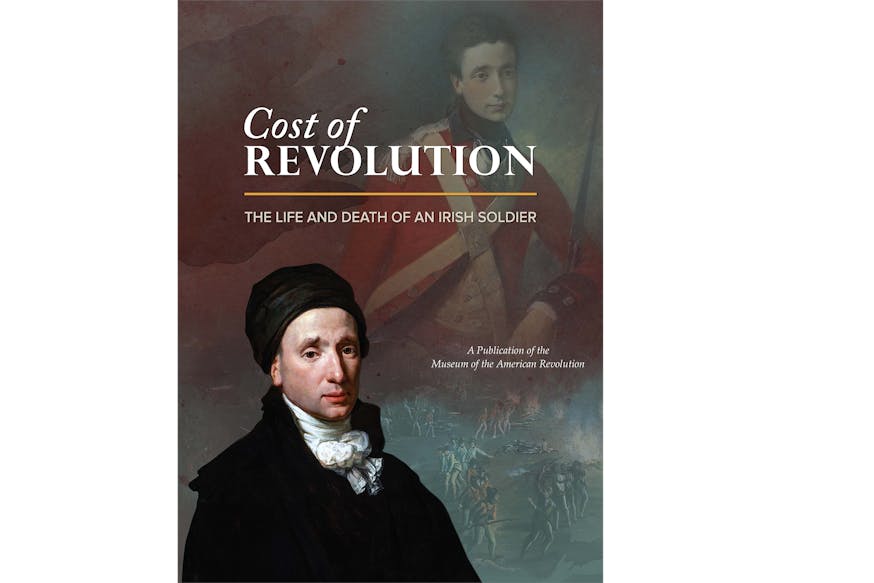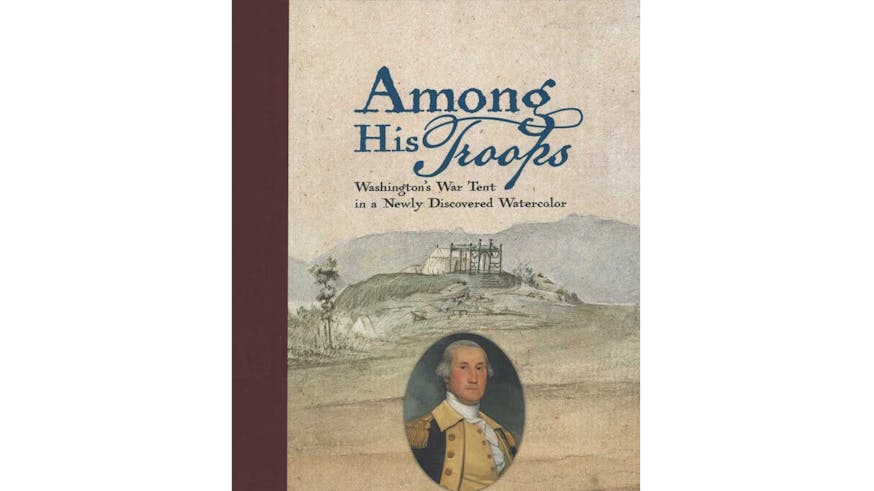Read the Revolution
Museum of the American Revolution Official Guidebook
December 18, 2019
Purchase the book from the Museum Shop.
From the day the Museum of the American Revolution opened in April 2017, guests asked if there was a book available that captured the spirit of our core exhibition. This past July, the Museum released our Official Guidebook, which captures that spirit, highlighting some of the more memorable moments in the exhibition.
The Guidebook is divided into sections, with each section encapsulating one exhibit gallery. Sections also present an overview of the Museum’s founding, archaeological work, collections, and educational initiatives. Each section of the Guidebook includes full-color photographs of important images and objects, deeper dives into select stories, and a behind-the-scenes look at making the Museum.
The Guidebook, like the exhibit, begins in the 1760s when revolution was not even a distant thought for most Americans. The following two excerpts, which reflect the “Rule Britannia” and “American Liberties 1765-1775” galleries, show that even as late as 1775 America’s revolutionary future was not so obvious.
Excerpt 1 - British America
In 1763, many British Americans were proud to be part of the most powerful empire in the history of the world. In that year, a peace treaty between Britain, France, and Spain ended the Seven Years' War. This victory gave Britain an empire that stretched around the globe, including all the lands east of the Mississippi River.
Perhaps two million or more colonists inhabited this land. Most of these colonists celebrated Britain-and King George III-as the greatest protector of liberty in the world. They believed that the King would provide them with order, peace, religious freedom, and the right to representation.
In addition to the British colonists, there were another million or more people living on these lands. They included Native Americans, former French and Spanish colonists, and enslaved and free African Americans. Their relationship to the British crown, and to their colonial neighbors, was complicated.
Native Americans had to decide to fight or to accept that the British had claimed the land that had been their home for thousands of years. Some hoped the King would help them protect their lands from colonial settlers. Others thought that war was the best strategy for safeguarding their homes.
Former Spanish and French colonists had to decide if they wanted to assimilate into British culture. However, French colonists hoped that King George III would protect their Catholic and native religious traditions.
About one in five Americans was enslaved, some born in America and others captured and carried across the Atlantic from Africa. Some enslaved African Americans whispered rumors that King George III might have sympathy for their cause.
But virtually no one expected large numbers of Britain's colonists who had fought for the empire in the last war to have a problem with their king. The next decade proved that in politics, nothing is certain.
Excerpt 2 - Decade of Resistance
Britain's 1763 victory in the Seven Years' War brought turmoil rather than peace. Britain claimed millions of acres of French, Spanish, and Indian lands in North America – but this territory saddled the empire with massive political and economic challenges.
In 1763, some Native American nations rose up against British forces and forts in their homeland, in what was called Pontiac's War. To ease tensions, King George closed Indian lands to new settlement, stationing troops in frontier forts to keep peace. Then the British Parliament imposed a tax-the Stamp Act of 1765 — to support these troops.
To the British government, this tax on legal documents and other paper seemed reasonable. In England, people had been paying stamp taxes for nearly a century. The Stamp Act was expected to raise less than half of the cost of supporting the British Army in America.
Americans, however, saw the Stamp Act as an invasion of their rights. They felt taxes should only be imposed through their own elected legislatures. “No taxation without representation” became their rallying cry.
Parliament repealed the Stamp Act and replaced it with another set of taxes, but Americans opposed those too. Tensions grew, particularly in Boston, where the British Army sent regiments to protect customs officials in 1768. Violence exploded when a crowd attacked a British guard on March 5, 1770, culminating in an event the colonists called the Boston Massacre.
In 1773, the British government tried to boost the struggling East India Company with an exclusive right to import tea directly to America from London. But Americans interpreted the Tea Act as creating an unfair monopoly and as clever persuasion. On the night of December 16, 1773, colonists dressed as Indians boarded a tea ship in Boston Harbor, dumping the contents into the water.
The British government responded swiftly. Parliament imposed the Coercive Acts, which included closing the port of Boston to trade, suspending the government charter of Massachusetts, and establishing military law in the colony.
People throughout the American colonies, however, sympathized with Massachusetts. Suddenly, the colonists were unified beyond anything the Americans could have accomplished on their own.
Read the Revolution is published biweekly by the Museum of the American Revolution to inspire learning about the history of the American Revolution and its ongoing relevance.
Sign Up
Get biweekly Read the Revolution featured excerpts right to your inbox.
Tags
Learn More

Archaeology at the Site of the Museum of the American Revolution

Cost of Revolution
